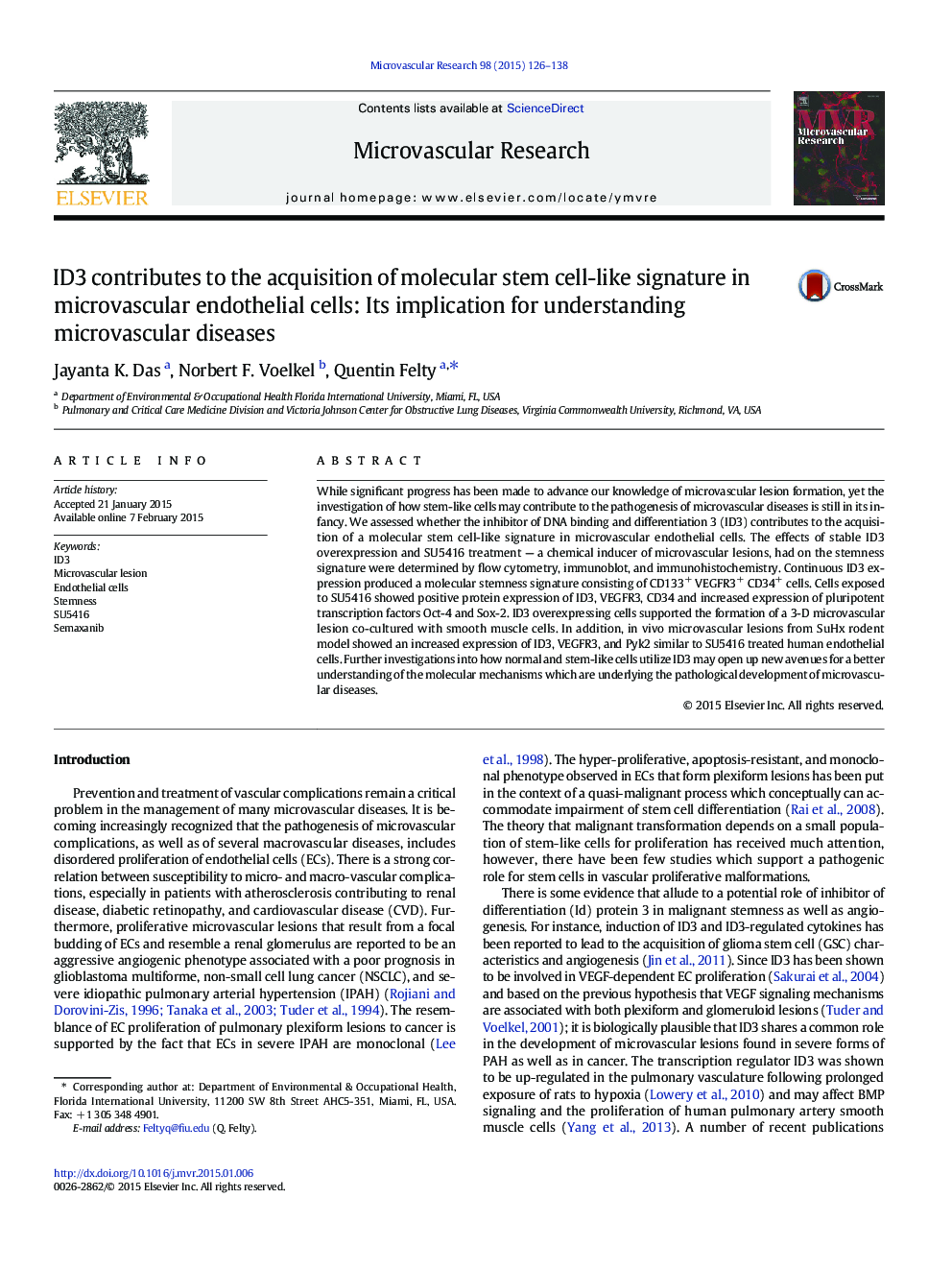| Article ID | Journal | Published Year | Pages | File Type |
|---|---|---|---|---|
| 1994825 | Microvascular Research | 2015 | 13 Pages |
•ID3 overexpression significantly increased stemness markers in endothelial cells.•ID3 overexpression resulted in vascular stem cell signature — CD133+ VEGFR3+ CD34+.•ID3 overexpressing cell phenotype was similar to microvascular glomeruloid lesions.•VEGFR inhibitor SU5416 significantly altered stemness markers in endothelial cells.
While significant progress has been made to advance our knowledge of microvascular lesion formation, yet the investigation of how stem-like cells may contribute to the pathogenesis of microvascular diseases is still in its infancy. We assessed whether the inhibitor of DNA binding and differentiation 3 (ID3) contributes to the acquisition of a molecular stem cell-like signature in microvascular endothelial cells. The effects of stable ID3 overexpression and SU5416 treatment — a chemical inducer of microvascular lesions, had on the stemness signature were determined by flow cytometry, immunoblot, and immunohistochemistry. Continuous ID3 expression produced a molecular stemness signature consisting of CD133+ VEGFR3+ CD34+ cells. Cells exposed to SU5416 showed positive protein expression of ID3, VEGFR3, CD34 and increased expression of pluripotent transcription factors Oct-4 and Sox-2. ID3 overexpressing cells supported the formation of a 3-D microvascular lesion co-cultured with smooth muscle cells. In addition, in vivo microvascular lesions from SuHx rodent model showed an increased expression of ID3, VEGFR3, and Pyk2 similar to SU5416 treated human endothelial cells. Further investigations into how normal and stem-like cells utilize ID3 may open up new avenues for a better understanding of the molecular mechanisms which are underlying the pathological development of microvascular diseases.
